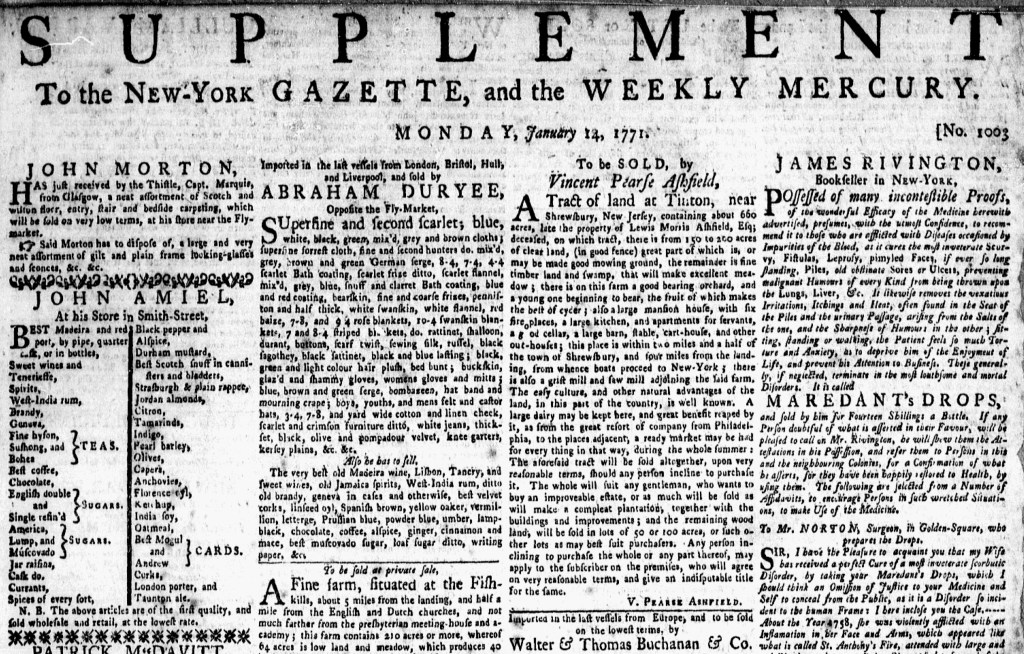What was advertised in a colonial American newspaper 250 years ago this week?

“Said Morton has to dispose of, a large and very neat assortment of gilt and plain frame looking-glasses and sconces.”
Hugh Gaine, “Printer, Bookseller, and Stationer, at the Bible and Crown, in Hanover-Square,” printed the New-York Gazette and Weekly Mercury, one of several newspapers published in the city in the early 1770s. On many occasions, Gaine devoted more space to disseminating advertising than news articles, letters and editorials, prices current, and shipping news from the customs house. Such was the case for the January 14, 1771, edition.
Like other eighteenth-century newspapers, that issue consisted of four pages created by printing two on each side of a broadsheet and folding it in half. Some printers reserved advertising for the final pages, but Gaine distributed paid notices throughout his newspaper. The first two columns on the first page of the January 14 edition contained advertising. News accounted for most of the third and fourth columns, but five short advertisements concluded the fourth column. News filled the first three columns of the second page before giving way to advertising in the final column. On the third page, readers encountered news in the first two columns and advertising in the last two. The final page consisted entirely of paid notices. Overall, nine of the sixteen columns, more than half of the issue, delivered advertising to readers.
Yet that was not all. Gaine had so many advertisements that did not fit in the standard issue that he also published a two-page supplement to accompany it. With the exception of the masthead, that supplement contained nothing but paid notices, another eight columns of advertising. Considered together, this amounted to seventeen of the twenty-four columns in the standard issue and supplement. More than two-thirds of the content that Gaine delivered to subscribers and other readers that week consisted of advertising.
For many newspaper printers in eighteenth-century America, advertising generated revenues that rivaled or surpassed subscription fees. For Gaine, that was almost certainly the case, thought the volume of advertising also suggests impressive circulation numbers. Advertisers would not have chosen to insert their notices in his newspaper if they were not confident that they would reach the general public.
